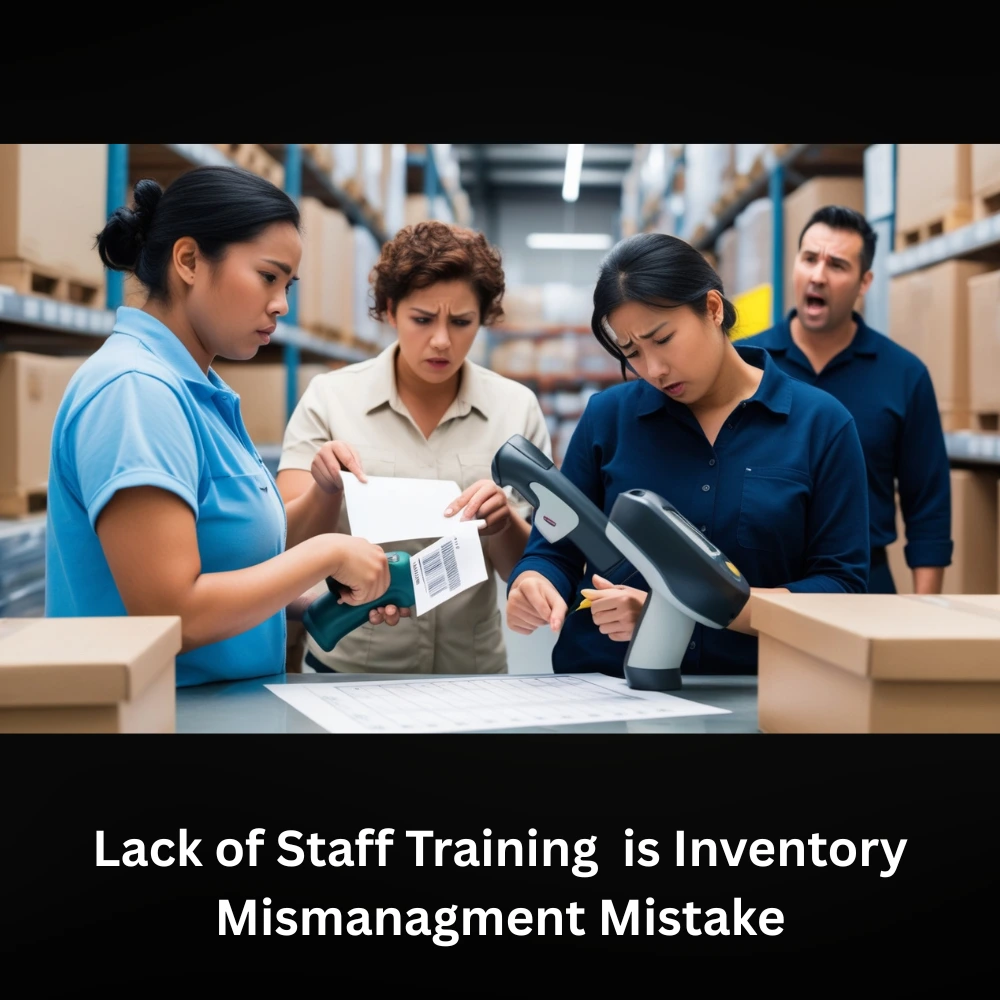Managing inventory is like balancing a seesaw. One wrong move from too much or too little stock can throw your whole business off. Whether you’re running a retail store, warehous or online shop, keeping your inventory under control is critical. But even experienced businesses make simple inventory mistakes that cost them money, time and customer trust.
What Is Inventory Mismanagement And Why It’s a Silent Business Killer?
Inventory mismanagement refers to any failure to control, track or optimize stock levels. This includes overstocking, stockouts, poor storage, inaccurate records, or failing to reorder on time. It’s not just a minor operational error but it’s a silent killer of profits, customer satisfaction and business growth.
The Real Cost of Poor Inventory Management
Many businesses don’t realize how expensive bad inventory habits can be. According to industry reports:
- Businesses lose up to 30% of revenue due to stock related problems
- 43% of small businesses don’t track inventory or use manual methods
- One out of every three customers may stop purchasing from a brand after experiencing a single stockout or shipping delay.
These aren’t just numbers but they’re lost opportunities, unhappy customers and wasted resources.
Top Inventory Mismanagement Mistakes
Let’s dive into the most common inventory mismanagement mistakes and explore simple, practical ways to avoid them in daily business operations.
1. Overstocking
Overstocking happens when a business buys or produces more inventory than it can sell. While it may seem like a good idea to have extra stock “just in case,” the reality is quite the opposite. Extra inventory ties up cash, takes up space and may become outdated, damaged or unsellable, especially if you deal with seasonal or perishable goods.
Why it happens?
- Overestimating demand
- Poor forecasting
- Bulk buying without a sales plan
How to avoid it?
- Use sales data to plan purchases
- Regularly review your slow-moving stock
- Set max stock limits for each item
- Use just-in-time inventory techniques if possible
2. Understocking
Running out of stock right when customers want your product is frustrating for them and for your business. Understocking leads to lost sales, disappointed customers, and even negative reviews.
Why it happens?
- Poor demand forecasting
- Long supplier lead times
- No alert system for low stock
How to avoid it?
- Set reorder points for each product
- Track fast-moving items more closely
- Use inventory alerts in your software
Communicate with suppliers for better delivery planning
3. Inaccurate Demand Forecasting
Demand forecasting involves estimating future customer demand to help businesses plan inventory and sales more effectively. When your forecasts are off, you either overstock or understock. Many businesses rely on guesswork or gut feeling instead of using data.
How to do it better?
- Use historical sales data and trends
- Consider seasonal changes or marketing campaigns
- Adjust your forecasts monthly, not yearly
- Use forecasting tools in your inventory software
4. Phantom Inventory
Phantom inventory means your system shows items as available, but they aren’t physically there. This may happen because of stolen items, damaged goods, counting errors or not updating inventory records on time.
Problems caused
- Accepting orders you can’t fulfill
- Over-ordering or under-ordering
- Frustration during audits or counts
Solutions
- Do regular cycle counts (partial stock counts weekly or monthly)
- Train staff to enter data correctly
- Use barcode scanners or RFID systems for better accuracy
5. Manual Tracking and Human Errors
Many small businesses still use spreadsheets or handwritten records for inventory. While this might work in the beginning, manual tracking leads to errors as your business grows.
Common mistakes
- Entering wrong quantities
- Forgetting to update records
- Confusing similar product codes
How to fix it?
- Move to inventory management software
- Automate data entry where possible
- Assign one person to manage inventory control
- Do random spot checks to catch errors early
6. No Real Time Inventory Tracking
If you can’t see your stock levels in real time, you’ll always be reacting late. This delay can lead to missed sales, poor customer service, and supply chain issues.
Solution
Use cloud based inventory systems that sync across your sales channels. These systems give you real-time updates on current stock levels, low inventory alerts and recently sold items.
7. Ignoring Reorder Points
Each product needs a reorder point. This is the stock level that signals, it’s time to restock before running out. If you don’t set or follow these points, you risk running out.
What to do?
- Determine reorder points by using your average daily sales and the time it takes for new stock to arrive.
- Set automatic alerts when stock hits the threshold
- Review and adjust reorder points regularly
8. Poor Warehouse Organization
Your warehouse layout affects how fast and accurately your staff can pick, pack, and ship. A messy or badly organized space leads to delays, lost items, and mistakes.
Tips for better organization
- Label all shelves and bins clearly
- Place fast-moving items near packing stations
- Keep a map or layout plan
- Train your team on warehouse procedures
9. Not Auditing Your Inventory
Inventory audits matter even when you believe your records are correct. They help confirm accuracy and catch hidden issues. Regular checks help you catch errors, theft, or damage early.
Types of audits
- Full physical counts (annually or bi-annually)
- Cycle counting (smaller, more frequent counts)
- Spot checks (random checks weekly or daily)
10-Lack of Staff Training
Even with the best systems in place, poorly trained staff can still cause inventory chaos. Mistakes happen when employees don’t understand how to log items, manage returns, or handle damaged goods.
What you can do?
- Provide regular training and refreshers
- Write easy-to-follow SOPs (Standard Operating Procedures)
- Assign clear roles and responsibilities
- Encourage team accountability
11. Not Learning from Past Mistakes
If inventory problems keep happening, there’s a pattern. Ignoring past errors leads to repeated losses. Regularly reviewing your inventory performance each month can help you spot problems early and improve overall efficiency.
What to review?
- Dead stock reports (items that don’t sell)
- Shrinkage (inventory lost or stolen)
- Turnover rate (how fast items sell and get replaced)
- Supplier performance
what happens when inventory is mismanaged?
1. Loss of Sales and Revenue
When stock isn’t available at the right time, customers leave and buy from competitors. This leads to missed sales opportunities and a decline in revenue.
2. Poor Customer Experience
Late deliveries, out-of-stock products or order cancellations due to inventory errors create frustration and damage your reputation. Customers may not return.
3. Increased Holding Costs
Overstocking ties up cash in unsold inventory. It also increases storage, insurance and maintenance costs, especially for perishable or seasonal items.
4. Stockouts and Emergency Restocking
Understocking means you’ll run out of products and may need to place urgent restock orders, often at a higher cost and with shipping delays.
5. Inaccurate Financial Reporting
Inventory errors lead to incorrect profit calculations, inaccurate balance sheets and tax problems. Relying on inaccurate inventory records can lead to poor financial decisions.
6. Workflow Disruptions
Employees waste time searching for misplaced items, correcting order errors or dealing with return requests also slowing down your entire operation.
7. Low Staff Productivity
Manual tracking and frequent corrections demotivate your team. If inventory systems are unreliable, employees end up wasting time double checking stock levels instead of focusing on their tasks.
8. Higher Risk of Theft and Shrinkage
Disorganized inventory makes it easier for theft, misplacement and damage to go unnoticed. Without proper tracking, losses become harder to trace.
9. Reduced Business Growth
When inventory is out of control, it limits your ability to scale. You can’t expand into new markets, launch new products or take on larger orders confidently.
How Strong Inventory Management Empowers Growth?
When you manage your inventory well, everything becomes easier:
- Items are in stock and ready whenever customers want to purchase them.
- You only spend money on what sells
- Staff can perform their tasks more efficiently and with greater accuracy.
- You build trust with customers and suppliers
- You’re ready to scale without fear of failure
Proper inventory control transforms your business from reactive to proactive and profitable.
Conclusion
Inventory mismanagement isn’t just a technical issue. It’s a business problem. It affects your cash flow, customer satisfaction and long term growth. The good news is that most inventory mistakes are easy to fix with consistent effort, the right tools and good habits.
By keeping an eye on stock levels, using real-time tools, setting reorder points and training your team, you can avoid these costly pitfalls. And when you do make mistakes (because everyone does) learn from them, adapt and move forward stronger than before.



